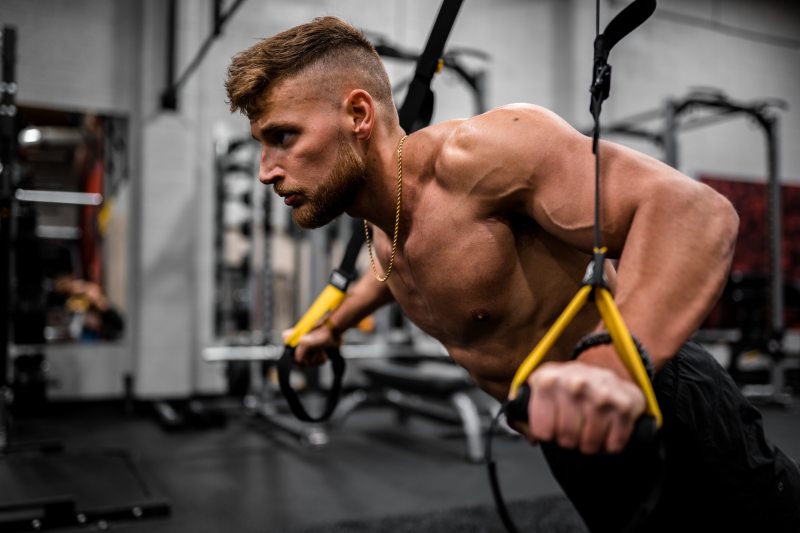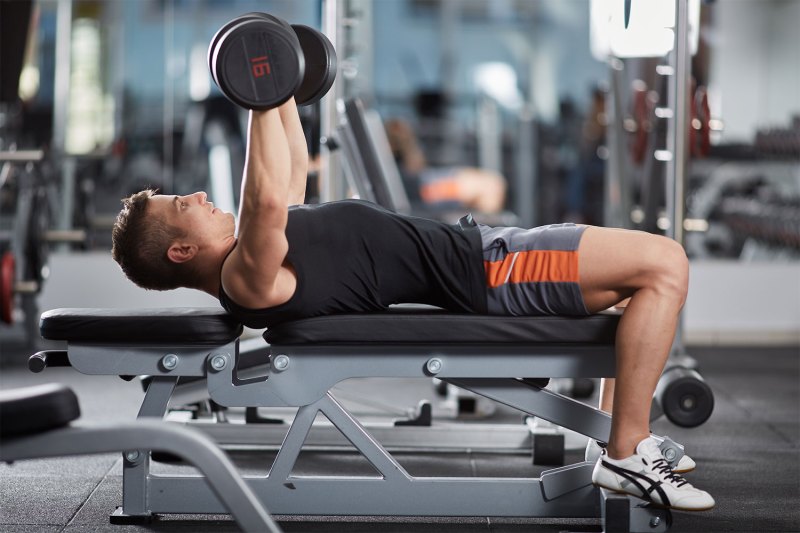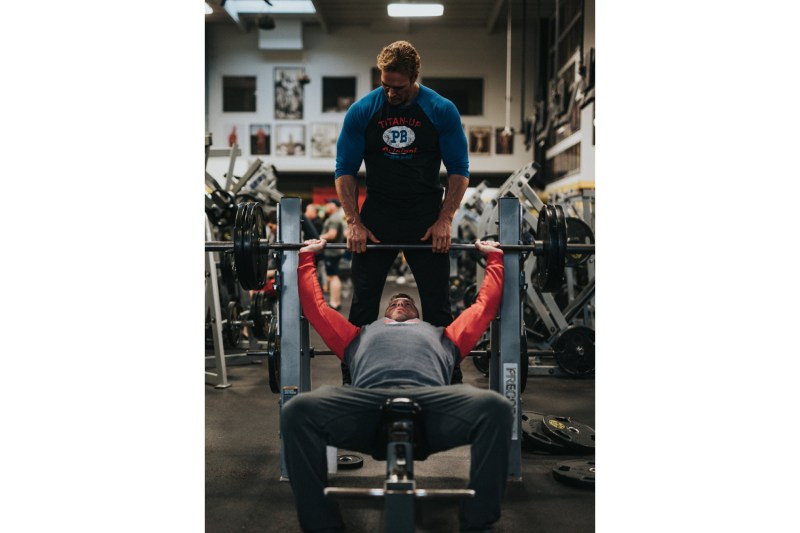Weight training needs to be completed in a safe environment. If you’re new to the world of weightlifting, a fitness instructor can help you stay safe and avoid injury while you learn all the different weight-bearing exercises that are best executed in a professional gym environment.
For more seasoned pros, an instructor may not be needed, but using weights and weight training apparatus still requires a safety-first mentality. Overloading a machine or bars is the main cause of injury in weightlifters, mostly in the form of muscle pulls and tears.
Some weightlifting exercises are riskier than others, which is why exercises such as the bench press should be eased into slowly, with weights only gradually being increased as your strength and stamina grow.
What is the bench press?

Bench press exercises are designed to increase upper body strength. The equipment needed is a bench, a barbell, and of course, a set of plates.
A bench press involves lying on your back on a gym bench and pushing a barbell loaded with weights upwards, then returning the bar to the original starting position. There are variations of this exercise other than a standard press.
What muscles does it activate?

Chest, shoulder, and forearm muscles, along with biceps and triceps, are the main muscles activated during a bench press.
The pectoralis muscles are the major set of muscles in the chest. These muscle fibers connect the chest with the bones of the upper arms and shoulders. They are made up of the pectoralis major and minor muscles and are activated during a press.
The main muscles that make up the shoulder include the trapezius, which aids shoulder blade rotation and shoulder elevation, and the deltoids, which aid with arm extension, abduction, and lateral rotation.
While the pectoral major extends from the sternum into the shoulder, this provides flexing and internal rotation to the shoulder joint. All of these muscles get worked while completing each bench press.
The triceps are located at the back of the upper arms and help straighten the elbow, while the biceps muscles are located at the front. These aid with the flexing of the arm at the shoulder and elbow joints.
The forearm muscles consist of the pronator quadratus, flexor digitorum profundus, and flexor pollicis longus, which aid movement in the wrist and hands. These are also used to push the barbell into an upward position.
Bench press variations

Standard bench press
A standard bench press is the original bench press exercise. It can begin with only lifting the barbell itself for safety reasons until the technique is mastered. Then you can add weights as you gain stamina and strength over time.
How much should be bench pressed all depends on the strength of an individual and their age. According to the bench press calculator, some individuals can slowly gain enough strength in their shoulders, arms, and chest to bench press 90% of their body weight or more.
Incline bench press
To perform a bench press incline, lie on an incline bench that allows your upper body to be higher than your legs. Your hands should be positioned a little more than shoulder-width apart on the barbell for this type of press. This allows for more control over the bar than if you had a wider grip stance. Elbows should be kept under the wrist to allow the triceps to push the bar upwards.
If the elbows are not tucked under the wrists and move outwards, then the shoulders can take too much of the strain of each press. An incline bench press is completed when the barbell is fully extended upwards with straight arms and held for a couple of seconds. The barbell should then be returned to the starting position, with the bar only slightly resting on the chest.
Decline bench press
A decline bench press is performed on a gym bench with a 30-degree decline, which allows your knees to be higher than your head when you lie down on it. Again, for full control and to make sure that the chest muscles are fully activated, you need a grip that is slightly wider than the shoulders. The starting position is with the barbell held at chest level with elbows bent.
Each decline bench press is completed when the barbell is pushed upwards until the elbows and arms are straight. Decline presses are especially effective for strengthening the pectoralis majors.
Close-grip bench press
A close-grip bench press is effective for building triceps and is performed on a flat gym bench. Instead of a slightly wider-than-shoulder-width hand positioning on the barbells, which is the norm for other bench presses, a close-grip bench press must be performed with the hands much closer together on the bar.
Again, it’s important to keep the arms straight and the elbows tucked into your sides when performing each press. The bar should be pushed up and then brought down to just below chest level.
Wide-grip bench press
A wide-grip bench press places more demand on the chest muscles. However, this press is also good for building shoulder muscles. It’s performed on a level gym bench, and the technique is similar to other presses. The major difference is that the grip is much wider, and the hands are not level with but past shoulder width.
How to perform the bench press

Here are our tips for bench press how-tos:
- When doing normal bench presses, use a standard gym bench with no inclines or declines and lie down flat on your back with your legs spread apart and your feet on the ground.
- Firmly grip the barbell above your head with your thumbs and fingers, keeping your hands shoulder-width apart.
- Keep your elbows parallel to the bar and pull your shoulder blades together. Make sure not to arch your back too drastically.
- Lower the barbell to chest level, but do not allow your chest to take the full weight of the bar. Make sure your head remains firmly on the bench surface throughout.
- Raise the barbell until your arms are straight. Keep your elbows close to your sides.
- Return the barbell to chest level.
- Inhale when lowering the barbell and exhale when lifting it.
- Two sets of 10 reps are fine, but as your strength and bench press form improve, you can add another set. This also applies to all other types of bench presses.
Benefits of bench pressing

Bench presses are simple to master and can help build strength and stamina. They’re great for developing shoulder and chest muscles and toning the arms. You can also bench press with dumbbells by swapping the barbell with two individual sets of dumbbells held in each hand and pushing them upwards simultaneously.
Risks of bench pressing

There are risks with doing bench presses, but only if you don’t follow the instructions on how to position yourself on the bench and how to lift the barbell safely. Risks mostly involve overloading the barbell and dropping it on your chest and ribs or pulling shoulder, neck, and arm muscles. The safest way to execute a set of bench press exercises is by having an assistant with you at all times.
Editors' Recommendations
- Bouldering: A beginner’s guide to this full-body workout
- Cranberries are great for your health: RDs reveal how to add them to your diet this winter
- Pilates equipment for beginners: Transform your home into a world-class Pilates studio
- This one simple healthy food trick may get you to eat better more often
- The surprising health benefits of cayenne pepper




